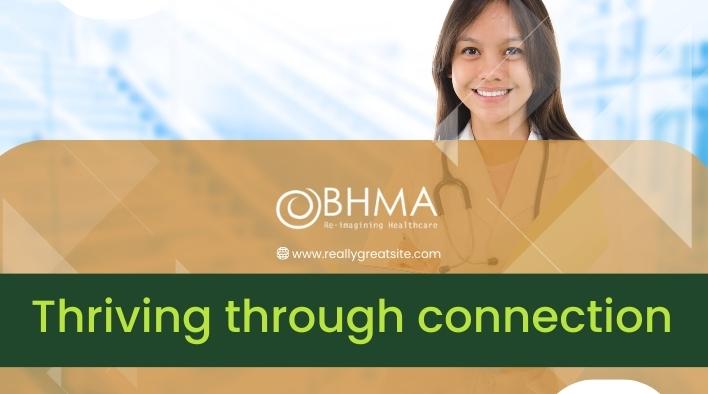Thriving through connection
Alex Bache Medical student, Barts and The London School of Medicine and Dentistry
Published in JHH18.1 – Flourishing in Medical Education
As a second-year medical student I recently took part in a creative arts course component to explore the interface between the arts and medicine. I am curious, and enjoy working with my hands and thinking creatively. After a tough autumn, I was able to reflect on wellbeing, and the student–patient relationship through the medium of art as a prompt and a beautiful language in itself.
In our first year at Barts, on GP placements, we were never required to take a formal history, but rather to consider the impact of the disease on the patient’s life, their family and community, and vice versa. Starting here, with the patient, not their symptoms, has set a precedent for me. We first form connection, and from connection grows empathy. I believe this is how we as students, doctors and patients, can thrive. In my mobile I explore ‘connection’ in the medical setting through the layers of my creative enquiry, touching on vulnerability, resilience, and ambiguity around the idea of the expert.
In the creative arts course I opted into, I made a hanging mobile titled The Patient–Doctor Relationship – an intentional flip that emphasises the patient.
Over the last few decades the accepted model of the doctor–patient relationship has moved from one of paternalistic guidance towards a more co-operative model of mutual participation and patient-centredness; a growing recognition not just of the humanity of the patient, but also of the ‘doctor-as-person’ (Kaba &Sooriakumaran, 2007).
The idea of narrative in patient–doctor encounters was a new one for me. While subconsciously knowing ‘story happens’, I had not considered the doctor as both being part of the story and the storyteller: that the patient is present with their own subjective thoughts and feelings of the encounter, running in parallel with the doctor’s. Kate Scannell (https://bit.ly/3le2YQQ) writes of the presence of a third space between these parallel narratives which is filled with shared meaning. This space and the intangible formation of connection and relationship is what I have attempted to explore.
Two faces stare at each other: one female with a furrowed brow, the other male with a neutral expression. In between lies a gap, the space disrupted by a series of symmetrical suspended objects that meet centrally as a golden heart. The faces are the same size and hung at equal eye level, creating equality and ambiguity as to which individual is the doctor and which is the patient.
I am conscious of the fluid boundary between doctor and patient. The reality is that doctors are not invulnerable although some stigma still exists around illness, particularly with mental health. My work aims to subtly challenge the concept that doctors need to be fully healthy and emphasises the need for humility as well.
Towards the centre the items become less substantial: an individual, a physical barrier, thought and knowledge, the ‘window of perception’ and the central heart depicting connection. On the left a smile hangs in front of the woman’s neutral expression, exploring how patients and doctors often mask how they are feeling, either putting on a ‘brave face’ as a patient or as a professional mechanism to cover their genuine feeling. On the right a literal face mask highlights the additional barrier provided by Covid PPE to relationships. The next two layers are identical, including a brain on either side to represent the contribution of two bodies of expertise knowledge: clinical and subjective experience.
More centrally we encounter the ‘window of perception’ which acts as a filter. The positive or negative route through this corresponds to sides of the central gold heart, which contains a tree. Half of the tree, as viewed through the positive filter, is flourishing, with swirling branches and a dense root network. The other side is surviving but bare and sparse. This heart represents connection and shared meaning of the relationship, formed by all the layers, and a space owned by neither and both individuals, independent of physical health. Finally, the central item shows the position of an early medical student as dispassionate observer, uniquely able to see both sides of the narrative.
The themes I have tried to explore are perspective, ambiguity around the ‘expert’, and the formation of a flourishing patient-doctor relationship. In terms of perspective, the dangling artwork means it can be viewed either from the patient or doctor’s view. In a time when the world is upside down, primary care needs to respond with forming connection through compassion, empathy and support for patients and doctors alike.
References
- Kaba R & Sooriakumaran P (2007) The evolution of the doctor–patient relationship. International Journal of Surgery, 5(1) 57–65.
- See more at https://sites.google.com/view/creative-enquiry[1]meded-qmul/the-patient-doctor-relationship







